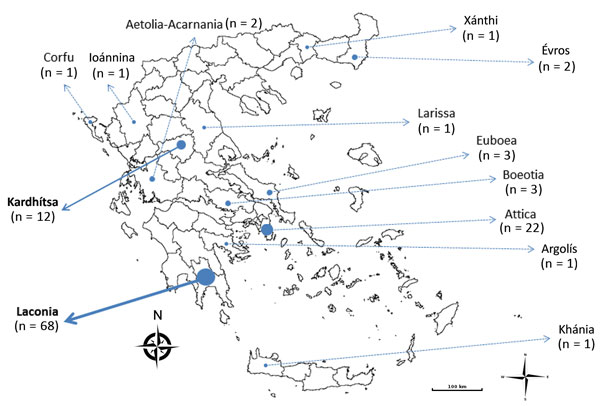Volume 24, Number 3—March 2018
Research
Genetic Spatiotemporal Anatomy of Plasmodium vivax Malaria Episodes in Greece, 2009–2013
Figure 1

Figure 1. Geographic origin of Plasmodium vivax cases analyzed, Greece, 2009–2013. The 2 foci of transmission are Laconia and Kardhítsa (in bold). Size of dots is proportional to number of cases. Samples from Attica were distributed widely throughout this large regional unit, which includes Athens.
1Additional members of MALWEST Project are listed at the end of this article.
Page created: February 15, 2018
Page updated: February 15, 2018
Page reviewed: February 15, 2018
The conclusions, findings, and opinions expressed by authors contributing to this journal do not necessarily reflect the official position of the U.S. Department of Health and Human Services, the Public Health Service, the Centers for Disease Control and Prevention, or the authors' affiliated institutions. Use of trade names is for identification only and does not imply endorsement by any of the groups named above.